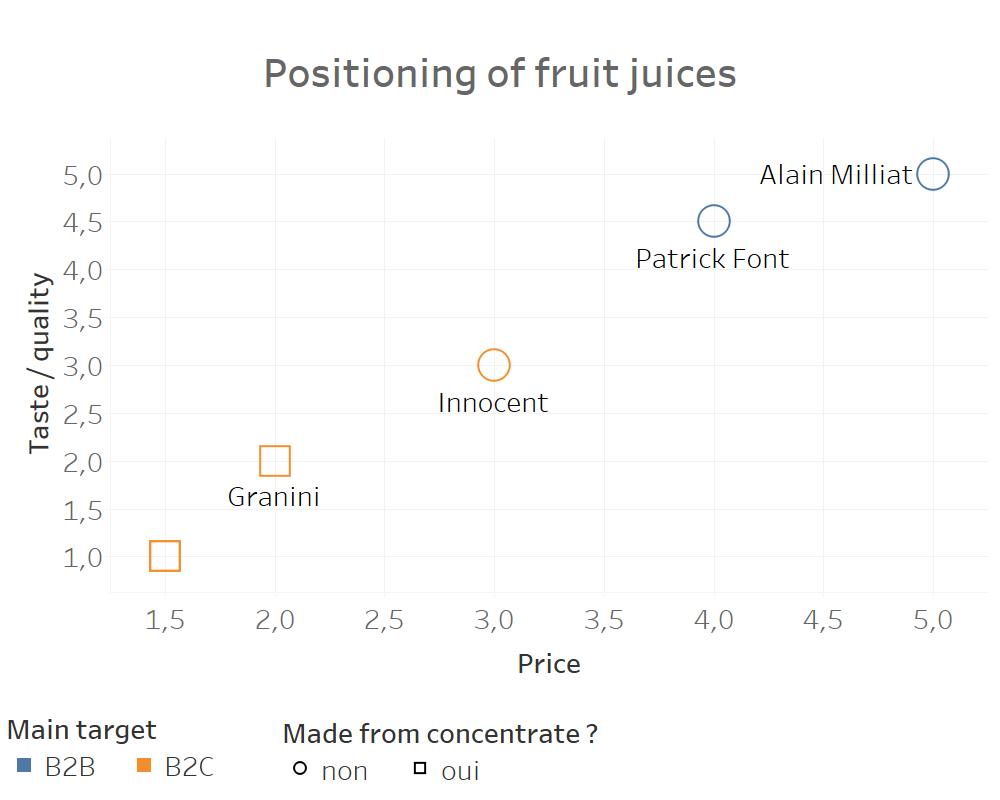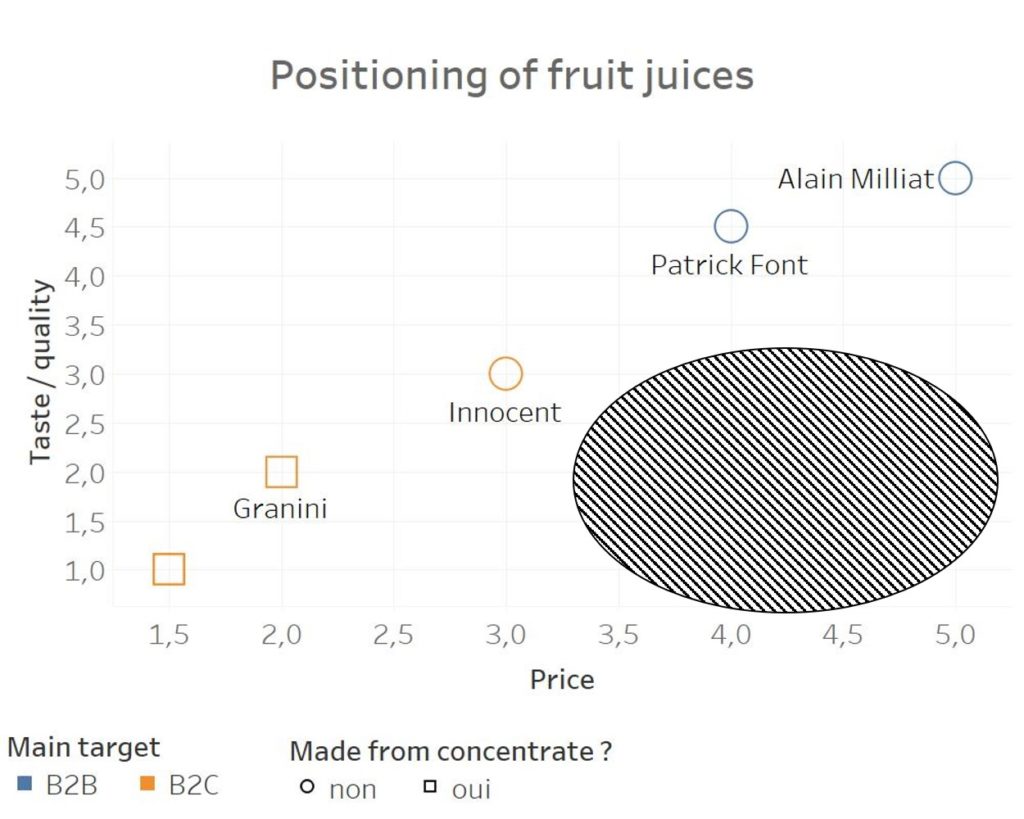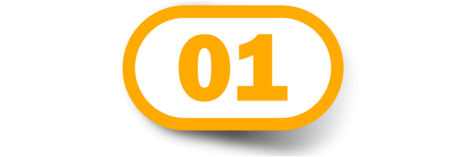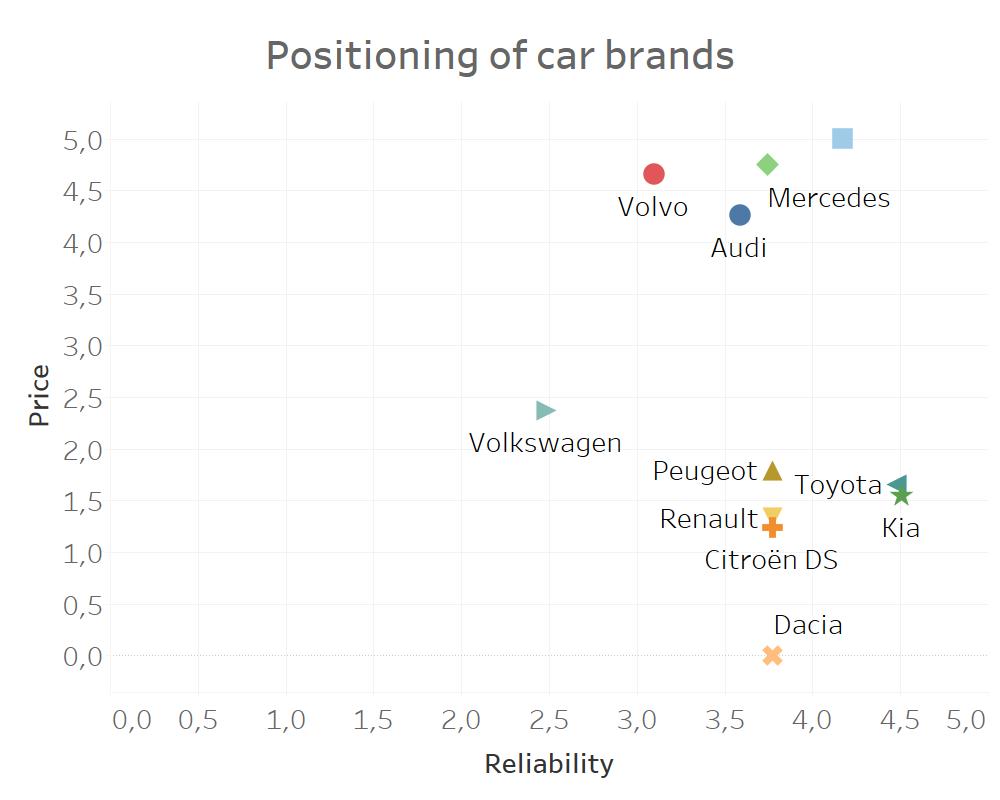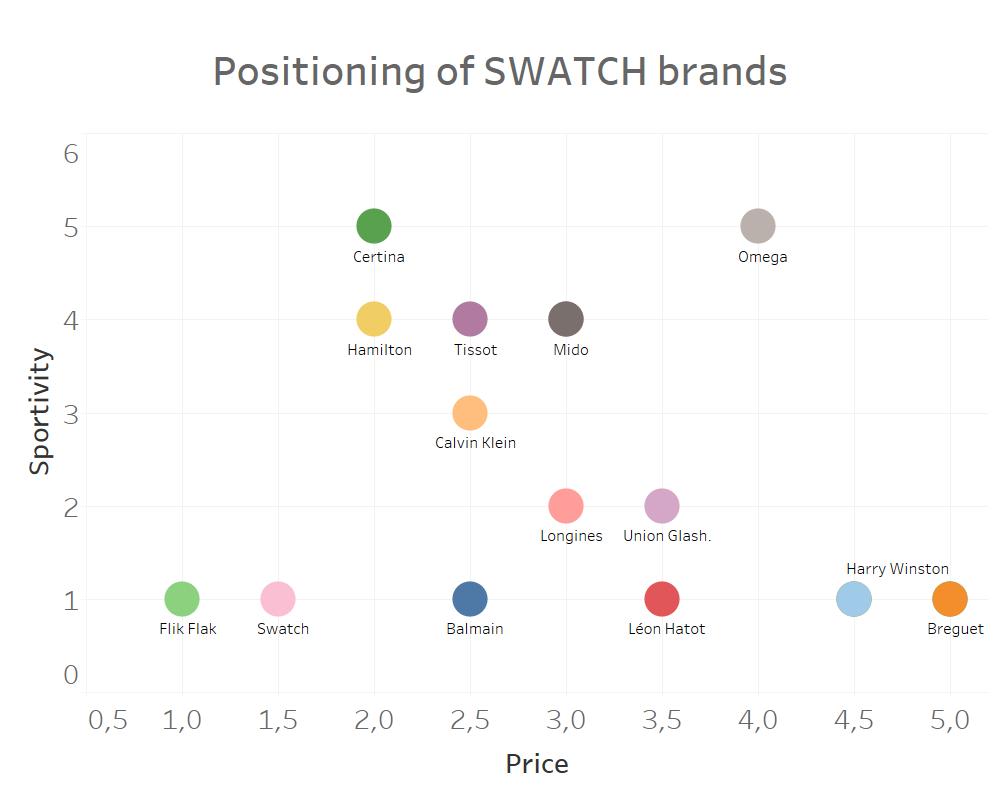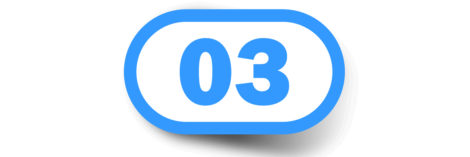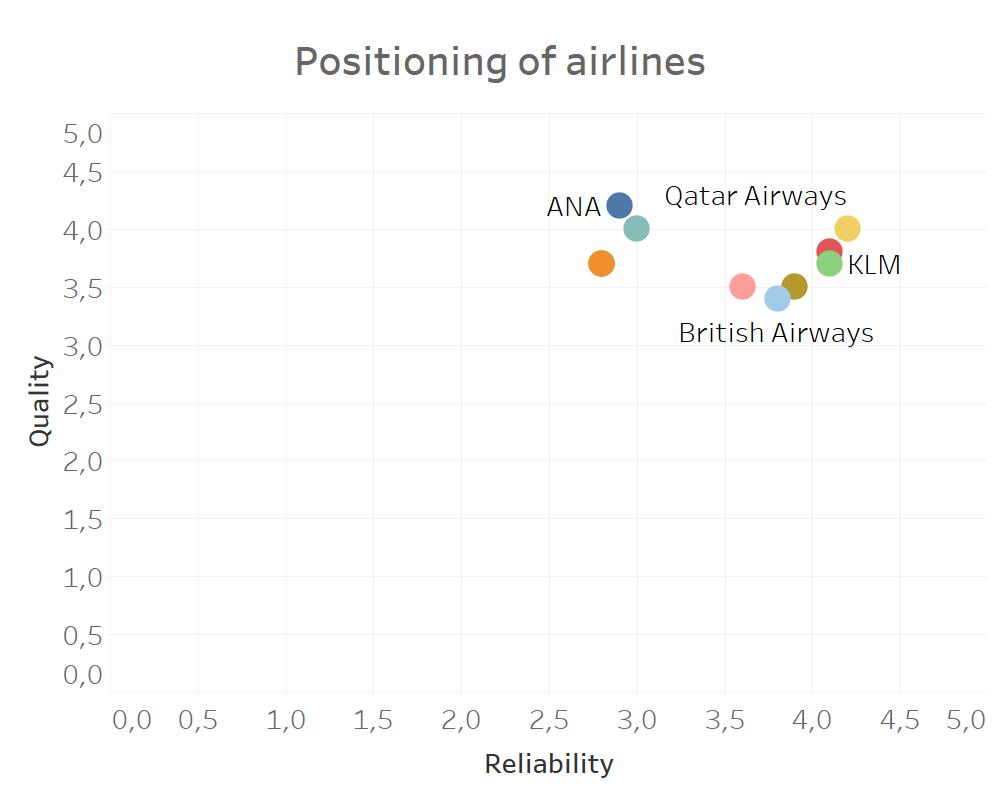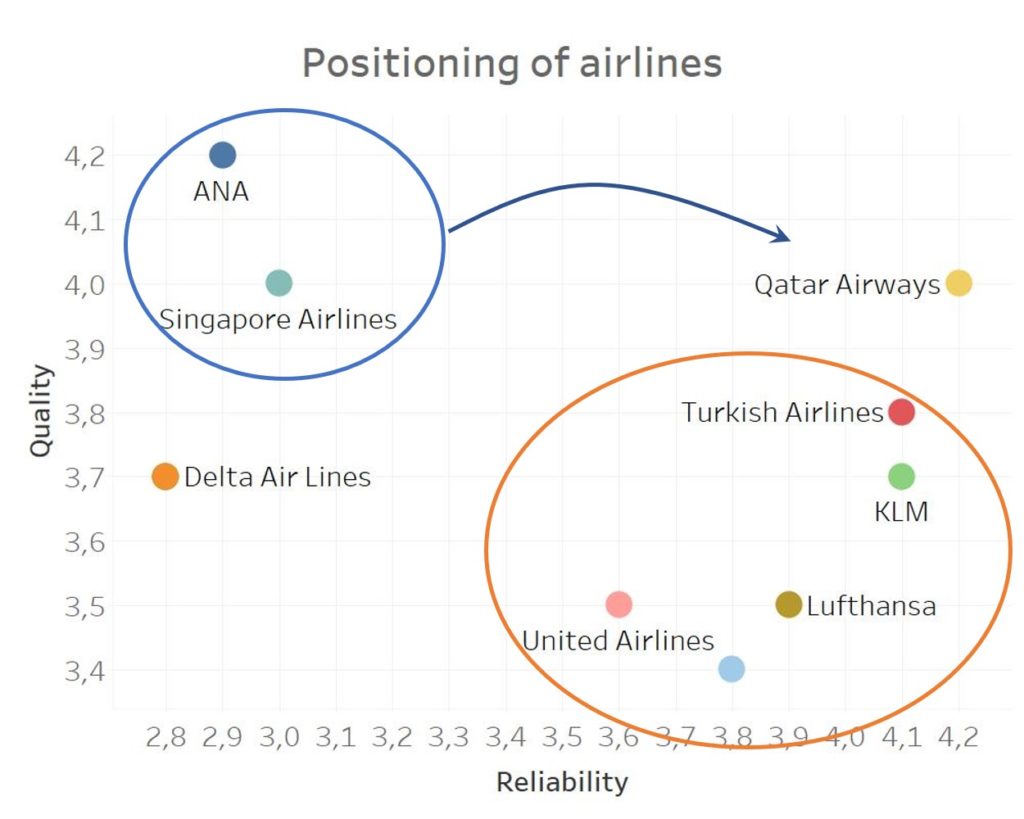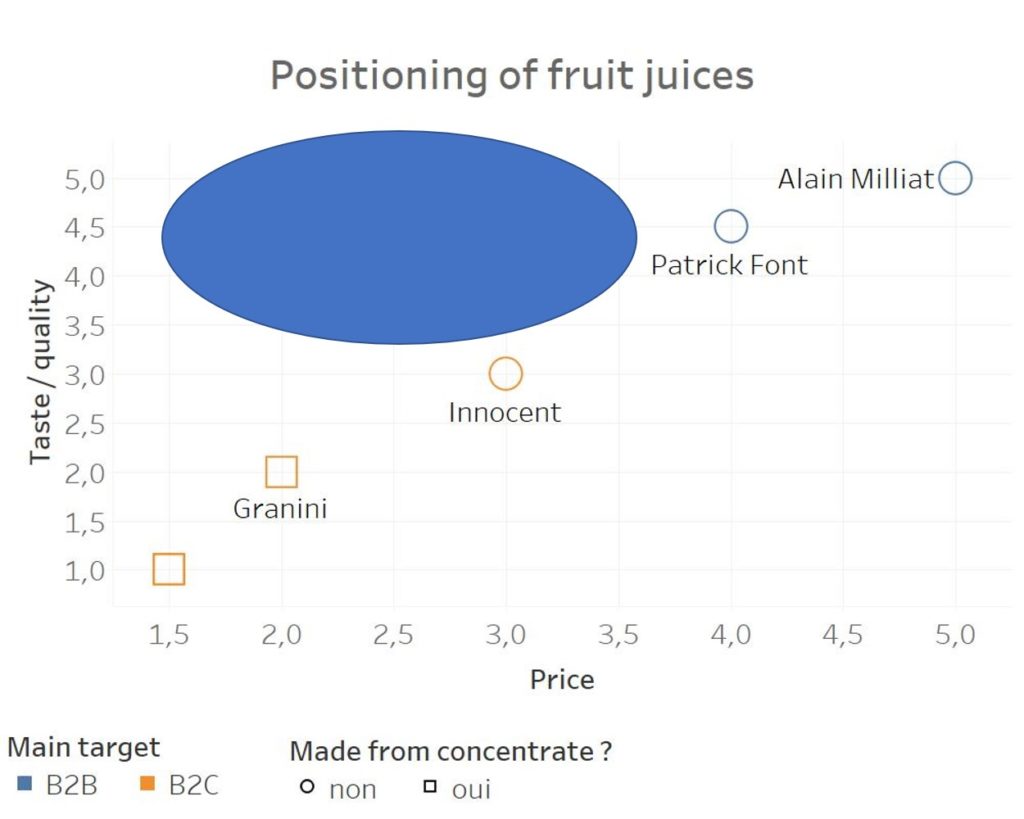Positioning in marketing is the set of elements that will allow your company to distinguish itself on the market, to be perceived uniquely by your customers. By analyzing your market and adopting a specific marketing positioning, you can differentiate yourself from your competitors. Marketing positioning can concern an entire company or a particular product when different product lines are proposed.
In this article, we will first lay down some theoretical foundations on marketing positioning. We will then propose a method to define and graphically represent a marketing positioning. Finally, we will discuss in-depth 4 examples of positioning in different sectors (automobile, watchmaking, aeronautics, fruit juice).
Summary
- Marketing positioning: definition
- Why define your marketing positioning?
- Marketing positioning research in 2 steps
- Choice of positioning
- The 4 categories of marketing positioning
- 4 detailed marketing positioning case studies
Marketing positioning: definition
Consumers have a composite image of a product or a company. This image depends on objective and subjective elements. This image allows the consumer to position the company on a mental map and guide his purchasing decisions.
The most common marketing positioning is assessing the company or a product according to the quality/price ratio. But many other criteria can make sense to the customer. You will find some of them in the table below.
| Positioning criteria | Type | Information allowing to infer the positioning |
| quality | subjective | customer reviews, test results |
| symbolism | subjective | advertising |
| price | objective | |
| customer service | objective | customer service response time, quality of employee interaction, employee expertise and experience |
| customer experience | subjective | visit of the sales outlet, advertising, … |
| customer satisfaction | objective | guarantees offered to satisfy the customer, reputation, prices obtained |
| exclusivity | objective | number of units produced, number of distribution channels |
| environmental aspects | objective | CSR Policy |
| brand image | subjective | advertising, marketing, word-of-mouth |
We usually represent the positioning of a product or a brand graphically on a two-dimensional map. These dimensions are chosen among the criteria that make sense to the consumer: the requirements they would consider to make a decision.
Why define your marketing positioning?
Marketing positioning is closely linked to another marketing concept: differentiation. Choosing the correct marketing positioning allows you to distinguish yourself from your competitors, to be perceived as “different” by your customers. In today’s world, where everything is similar, differentiation is undoubtedly one of the essential success criteria for any company.
To convince you of this, here are 3 examples:
- The Renault car brand was trapped in the mid-range, between the low cost and the premium/luxury segment. It suffers from this lack of identity, and it is its low-cost brand Dacia that allows it to be profitable.
- Citroën launched the DS brand to differentiate itself in the premium segment. Citroën suffered from the same problem as Renault (a rather vague positioning in the mid-range), and its DS subsidiary is the one that today ensures the group’s profitability.
- Ryanair has positioned itself on low-cost air transport. Today, it is the leading European airline. The Irish company has thus been able to differentiate itself from traditional companies and gain market share by satisfying the needs of a new clientele.
The steps of the marketing positioning research
Market research
The best way to define your marketing positioning is to start with market research. We won’t go back over the methodology (you can find it here). To correctly position the brands on a map, it is imperative to answer these 2 essential questions:
- What do customers expect, and what are the essential criteria of choice in their eyes (use a qualitative approach and then a quantitative survey to determine these criteria)?
- Who are your competitors, and how are they positioned concerning these criteria (this is the competitive research)?
Marketing positioning only makes sense if the factors you take into account also make sense to the customer.
Which tool should you use to create your positioning map?
The first possibility is to use PowerPoint or any other drawing software. In the end, it is only a matter of placing points (the brands or products) in a 2-dimensional space. You can also use Excel or a Business Intelligence (BI) tool to get a more precise result.
How to represent more than 2 dimensions on a positioning map?
It is unlikely that 2 criteria are enough to position your brand or product. The customer usually takes a multitude of criteria into account before making a decision. With Business Intelligence tools like PowerBI or Tableau, you can represent up to 4 dimensions on a graph. In the example below (a positioning map for fruit juice brands), we have represented a quality/price positioning. We used color to distinguish B2B from B2C and a shape to indicate the manufacturing mode (concentrate-based or not).
Choice of positioning
The map will allow you to choose your marketing positioning objectively.
Start by eliminating the areas on the map that are not of interest to the consumer. To take the example below, the grey area (high price, low quality) is of no interest to the consumer. It is therefore not worth investigating.
The upper left-hand quadrant, on the other hand, is of particular interest to the consumer. It is a part of the positioning diagram that corresponds to a low price and high quality. The price-quality ratio in this quadrant is therefore optimal. This marketing positioning would allow the consumer to get maximum value.
The question remains whether this positioning is economically viable for the company, whether it is technically realizable using this positioning. Proposing a product that is superior in taste implies using the best (and therefore most expensive) ingredients. We will see in case study 4 how Alain Milliat solved this problem.
Niche positioning and blue ocean theory
The marketing positioning exercise can identify a “niche,” that is to say, a territory on the map that is of interest to the client but where competitors are not yet active.
This niche positioning is part of the “blue ocean” thinking popularized by Chan Kim and Renée Mauborgne. According to this theory, you must position your company in a “blue ocean” where competitors are not yet present. The discovery of this blue ocean is made possible by considering the factors that make sense for the customer. Therefore, the “blue ocean” theory rejects a simplistic view that aims to “impose” the company’s marketing arguments on the consumer.
The 4 types of marketing positioning
Depending on the factors you choose to capitalize on, several types of positioning are possible.
Making an infinite number of marketing positions is possible, but we have tried to simplify the reading by grouping them under 4 main categories.
Positioning 1: Quality
Quality can be expressed in many different ways, which leaves room for broad interpretation. German car manufacturers (Mercedes, Audi, BMW) use this positioning and take advantage of the image of reliability that German products give off. In air transport, Singapore Airlines has focused on the quality of its staff and the comfort of its planes. In the field of smartphones, Apple has earned its credentials by proposing high-quality products (exterior design, functionalities).
Positioning 2: Luxury
The positioning on the luxury niche goes hand in hand with high-quality requirements. Luxury theorists (for example, Jea-Noël Kapferer) see high prices as an essential characteristic of luxury. Positioning in the luxury niche can only be compatible with high prices. There are a thousand variations of luxury depending on the sector. Think of leather goods (Vuitton, Delvaux, Hermes), clothing (Channel, Dior), cars (Rolls-Royce, Bentley, Pagani, Ferrari, …), hotels/restaurants…. The examples are numerous, and the positioning on the luxury niche is the one that has best resisted the crisis.
Positioning 3: The price
The other major category of positioning is price. If the luxury sector is synonymous with high prices, price positioning is primarily associated in the minds of consumers with “low-cost.” Examples abound. Aldi and Lidl (retail), Ryanair (air transport), Dacia (automotive), H&M and Zara (clothing), Formula 1 (hotels). Positioning oneself on low prices requires achieving excellence in the supply chain and production. This is the only way to realize savings that can be passed on to the end customer. The case of Ryanair is famous for having saved on maintenance costs by having only one model of aircraft, on airport costs by landing at secondary airports, on operational costs by increasing the number of flights per aircraft.
Positioning 4: the symbol
The last type of positioning is that which is symbolic. Symbols can be numerous in the customer’s mind: social positioning with luxury goods, counter-culture with low-cost objects (Lidl sneakers, for example). The “green” positioning (respect for the environment) is part of this category. The consumers who adhere to it are in a symbolic position since their benefits are not directly tangible. In B2B marketing, CSR (social and environmental responsibility) policies are part of this movement, which aims to attract buyers’ good graces.
Make the difference between the brand’s desired positioning and the positioning perceived by the customer.
Case study 1: Marketing positioning in the automobile industry
Because of the amounts it generates, the automobile industry is the archetype of a sector in which marketing positioning is essential. The multiplicity of car appreciation criteria opens the field to multiple niche positioning, especially for “exotic” car brands (Pagani, Remac, Koenigsegg, …).
A positioning analysis in this sector must therefore be realized using several dimensions. As an example, we propose an analysis according to 2 criteria: price and reliability.
We assessed the price by taking the average catalogue price of a brand’s models (source: Statista). Reliability is based on the JDPower ranking.
This map allows us to see the positioning that Japanese brands have taken, putting all their efforts into the reliability of their models while proposing a reasonable price. Kia has clearly “followed” Toyota in this niche, offering an even more extended warranty of 7 years.
Finally, please note that reliability has been assessed here based on objective criteria (JDPower benchmark). It is quite possible that a brand’s “theoretical” positioning is different, but reality does not allow it to meet its ambitions. A brand could aspire to be very reliable but not succeed. In this case, it is essential to differentiate between the positioning as communicated by the brand and the one perceived by the consumer.
Case study 2: The positioning of the Swatch Group watch brands
The Swatch watchmaking group is vertically integrated. It is composed of companies covering all stages of watch manufacturing. At the top of the chain is a galaxy of watch brands. Each brand has its positioning. The watch is ” in a good position,” the prestige of the brand is an essential criterion in the customer’s choice.
In the positioning map below, we can see the unique position of each brand in the Swatch Group constellation.
Case study 3: Marketing positioning in the airline industry
Even the airlines are adopting different positions. This is an essential key to differentiation to attract the most “profitable” travelers. That is to say, the business and high-end clientele, ready to spend large sums of money on traveling well. For this sector, a positioning map must consider the price on the one hand and comfort on the other. The “low-cost” airlines (Ryanair, EasyJet, …) stand out in this respect.
However, we can read the positioning according to other, more objective criteria. eDreams proposes a ranking of airlines according to objective standards. We have chosen 2 of them (reliability and perceived quality) to create the map below.
Using the complete scales (0 to 5), we realize that all the companies are in the same range.
By adapting the scale, we can better distinguish the perceived differences between the different companies. We see 2 groups that emerge. On the one hand, Ana and Singapore Airlines are perceived as very qualitative airlines whose reliability is not the best. On the other hand, a group (Turkish Airlines, KLM, Lufthansa, United Airlines, British Airways) whose reliability is better but whose quality is inferior. The danger comes potentially from Ana and Singapore Airlines, which would compete with Qatar Airways, which enjoys a privileged position if they manage to correct their reliability problems.
Case Study 4: Marketing positioning of fruit juice brands
Alain Milliat is a French entrepreneur whose eponymous brand is a reference in the field of fruit juices. He sells his products mainly in B2B (>95%) to starred hotels and restaurants. The 33 cl bottles are sold at retail between 5€ and 7€. The brand is known for the incomparable quality of its products, 100% pure fruit. It is, therefore, clearly a high-end product. Competitors who propose products of comparable quality are rare. Most brands sold in supermarkets (Tropicana, Innocent, Granini) are based on concentrates or lower quality fruits. We have placed 5 brands on the positioning map below.
The map shows us that a niche exists for less expensive products with a higher taste quality. In this niche, the Alain Milliat brand has come to position itself with its iced infusions. It is a light drink based on 2 fruits, water, and an infused plant. The use of water reduces the cost price; the infusion increases the taste pleasure. Given the price of ingredients, it remains to be seen whether this positioning is possible.
Posted in Marketing.


